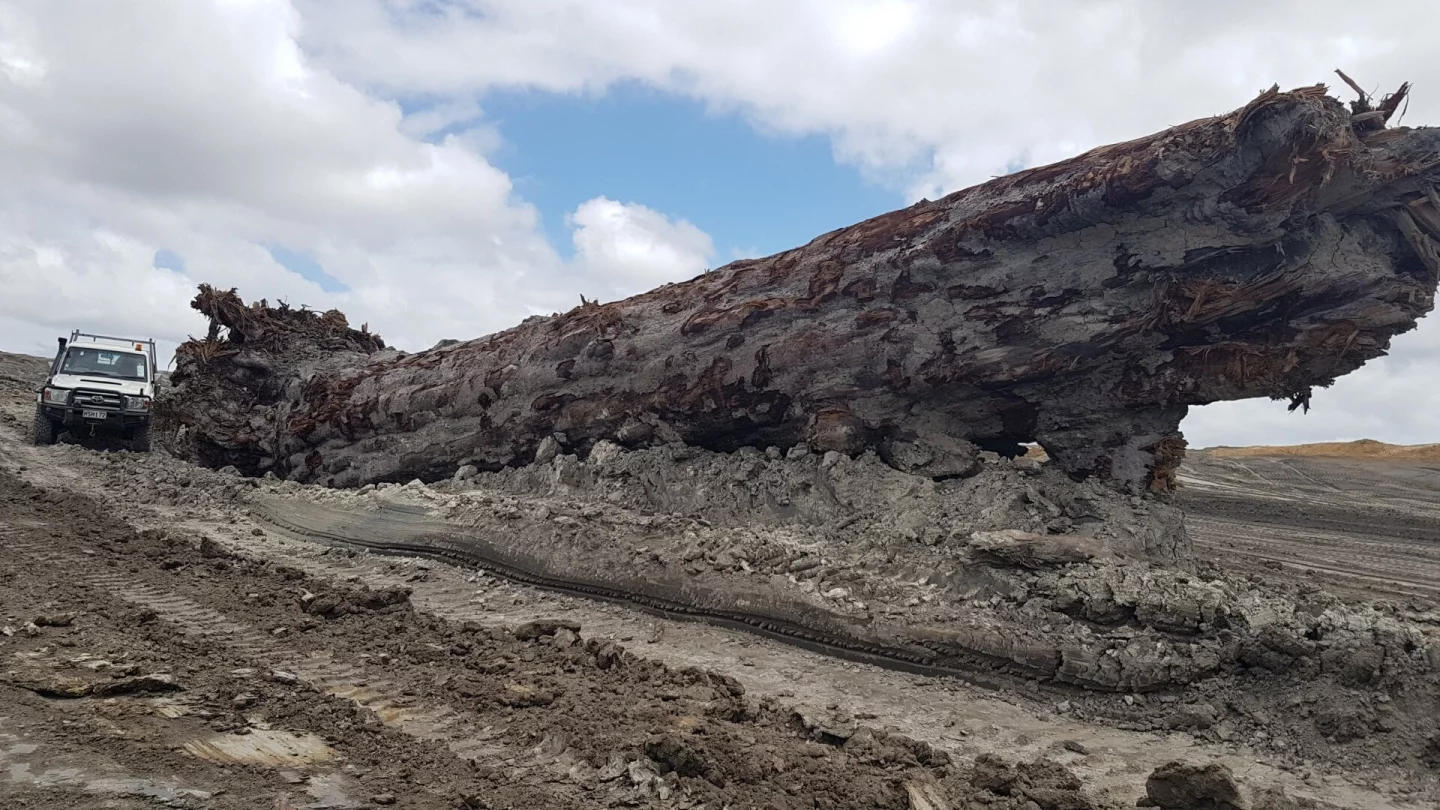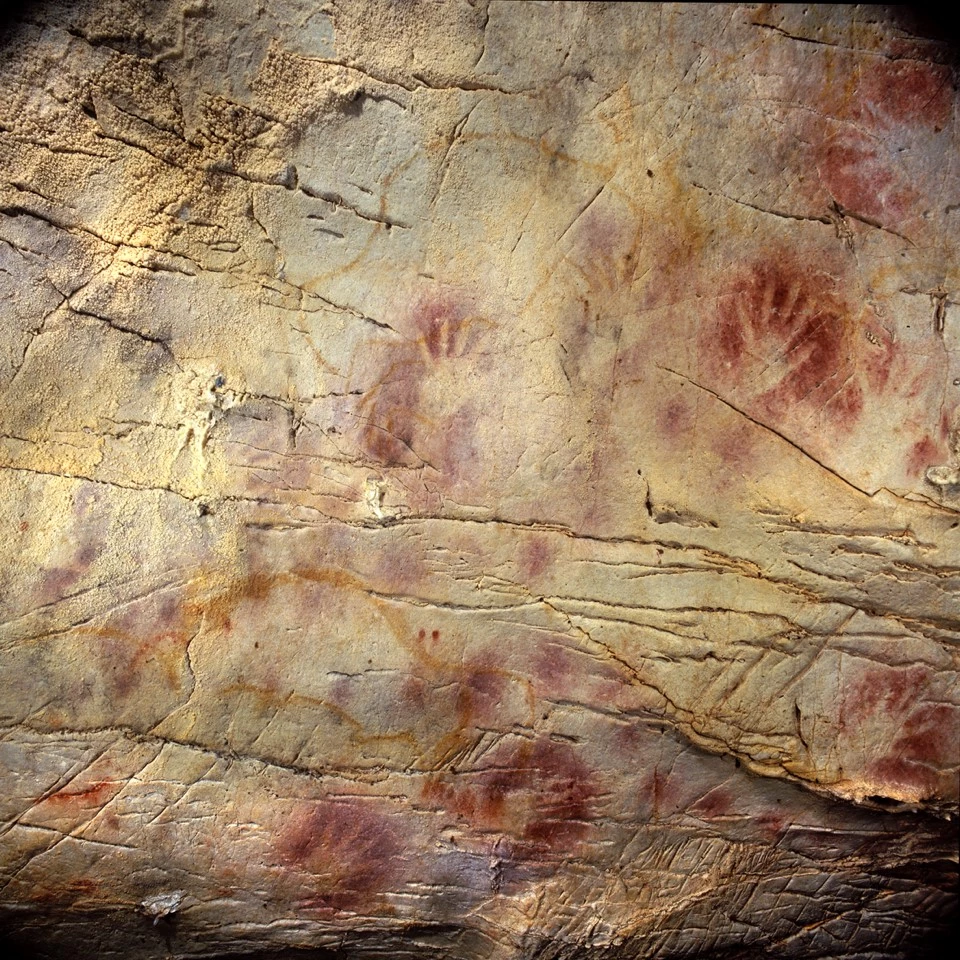A perfectly preserved ancient tree fossil has offered scientists a unique peek into a moment 42,000 years ago when the Earth’s magnetic field went haywire. The impressive study paints a picture of temporary environmental chaos, potentially influencing everything from an increase in cave paintings to the extinction of the Neanderthals.
Without the Earth’s magnetic field we’d have a pretty hard time living on the planet. Beyond helping us simply navigate around the world with a compass, the Earth’s magnetic field is fundamental to the existence of life. It helps deflect harmful solar winds and keeps our protective atmosphere in place.
But our planet’s magnetic field is far from static. In fact, it is profoundly dynamic, consistently shifting and fluctuating over time. Every few hundred thousand years it completely flips, with magnetic north switching places with magnetic south.
The last major geomagnetic reversal occurred 780,000 years ago, and plenty of scientists suggest we are well overdue for a similar event. In between these full geomagnetic reversals, which can last up to 10,000 years, we find shorter disruptions to the Earth’s magnetic field. These events are known as geomagnetic excursions.
Geomagnetic excursions are short-lived, and involve temporary changes to the Earth’s magnetic field lasting anywhere from a few hundred to a few thousand years. The most recent recorded geomagnetic excursion is known as the Laschamps excursion and it took place around 42,000 years ago.
"The Laschamps Excursion was the last time the magnetic poles flipped," explains Chris Turney, co-lead author on a landmark new study investigating this transformative event. "They swapped places for about 800 years before changing their minds and swapping back again."
Scientists have known about these dramatic magnetic pole events for a long time but it’s never been clearly understood what kind of impact they have on life or the environment. That is until a few years ago, when an ancient fossilized tree was discovered in New Zealand.

Workers preparing a site for a new power-plant unearthed the massive kauri tree trunk, perfectly preserved for 42,000 years, with its rings offering up an incredible 1,700-year record of the Earth’s environmental conditions exactly spanning the period of the Laschamps Excursion.
"For the first time ever, we have been able to precisely date the timing and environmental impacts of the last magnetic pole switch," says Turney. "Using the ancient trees we could measure, and date, the spike in atmospheric radiocarbon levels caused by the collapse of Earth's magnetic field."
In a bold new study, published in the journal Science, the research team used the detailed radiocarbon data from the ancient tree to create a novel timeline of the Earth’s atmosphere across the period spanning the Laschamps Excursion. The team then ran a global climate model, incorporating previously gathered data from all over the world, to explore what acute effects this type of magnetic field disruption had on the environment.
Life, the Universe and Everything
The results reveal an incredibly dramatic period of environmental change, particularly in the stretch of time leading up to the few hundred years the Earth’s magnetic field was reversed. The study calculated a depleted ozone layer, higher levels of ultraviolet radiation and increased atmospheric ionization all coalesced about 42,000 years ago. In tribute to author Douglas Adams – in whose book The Hitchhiker's Guide the the Galaxy, the supercomputer Deep Thought calculates the answer to the ultimate question of life, the universe and everything is "42" – the researchers named this specific period the “Adams Transitional Geomagnetic Event.”
"The more we looked at the data, the more everything pointed to 42," says Turney. "It was uncanny.”
Alan Cooper, co-lead author on the study, suggests a number of novel environmental conditions would have appeared during the so-called Adams Event. Auroras, for example, would have been widespread across the entire planet, alongside extraordinary volumes of electrical storms due to increases in ionized air.
“Early humans around the world would have seen amazing auroras, shimmering veils and sheets across the sky,” says Cooper. “It must have seemed like the end of days.”

Perhaps the most controversial part of the new study is the degree of hypothetical speculations the researchers make between the Adams Event and evolution of life on Earth. One link raised in the study suggests the magnetic field disruption led to an influx of cave art, underpinned by the need for humans to seek shelter from the increase in ultraviolet rays.
“We think that the sharp increases in UV levels, particularly during solar flares, would suddenly make caves very valuable shelters,” suggests Cooper. “The common cave art motif of red ochre handprints may signal it was being used as sunscreen, a technique still used today by some groups.”
Other bold speculations in the study are that the Adams Event both prompted the extinction of several megafauna species in Australia and hastened the end for Neanderthals. Chris Stringer, from the Natural History Museum of London, calls the new study important but also questions some of its broad hypotheses.
“The authors also make a link with the physical extinction of the Neanderthals around 40,000 years ago and I think it could certainly have contributed to their demise,” he said in an interview with The Guardian. “But they did survive longer and ranged more widely than just Europe, and we have a very poor fix on the timing of their final disappearance across swathes of Asia.”
Shifting to what the research can tell us about life on Earth today, Alan Cooper cautiously suggests his team’s research offer novel insights into how the world would be affected if something like the Adams Event were to happen nowadays. He points to current movements of the north magnetic pole across the Northern Hemisphere as a potential warning sign.
"This speed – alongside the weakening of Earth's magnetic field by around nine per cent in the past 170 years – could indicate an upcoming reversal," says Cooper. "If a similar event happened today, the consequences would be huge for modern society. Incoming cosmic radiation would destroy our electric power grids and satellite networks."
The new study was published in the journal Science, and the short video below narrated by Stephen Fry gives an overview of the Adams Event.
Source: UNSW





